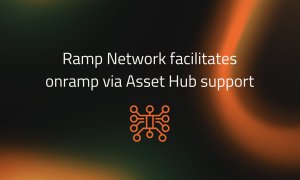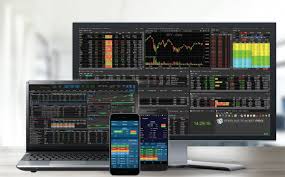As MT5 gains presence on DGCX, the exchange-traded FX question is once again raised. Here is how to go about it
Senior industry executives explain the considerations of integrating MetaTrader 5 to offer exchange traded FX via retail brokerages as DGCX confirms 10 brokers already connected

Some five years have passed since MetaQuotes launched the MetaTrader 5 platform, to a wave of tumultuous silence.
MetaTrader 4, its predecessor which traces its origins back to 2005, is still in widespread use, and represents the lion’s share of the worldwide market for retail OTC trading.
MetaTrader 5, however, is beginning to wake from slumber, aided by specialist broker software integration and connectivity firms which have for several years developed solutions which ensure that the MetaTrader 4 platform connects to live markets and meets the ever-evolving topography of the components of today’s highly technologically advanced electronic trading infrastructure, from the aggregated liquidity provided by banks to prime brokerages which handles the orders placed by retail traders.
Liquidity bridges, liquidity and order management systems and full software integration is now a finely honed technological art in this industry.
This, however, now embarking on a further evolutionary stage, and in doing so, rekindles the debates of last year in which many senior executives considered the possibility that FX trading may make its way toward exchanges.

Today, DGCX, one of the Middle East’s up and coming venues (DGCX stands for Dubai Gold and Commodities Exchange), has reached a milestone in that 10 brokers are offering trading via DGCX on the MetaTrader 5 platform.
DGCX, under the leadership of former CEO Gary Anderson who tragically passed away after a battle with cancer in November 2014, the DGCX raised its profile tremendously and became a landmark among currency trading in the Middle East, largely due to the Indian Rupee contract offered on the exchange.
Although DGCX is a commodities exchange and Dubai has a very strong history reputation for gold trading, the venue’s most popular contract is a currency contract.
By mid 2015, the Indian Rupee contract on DGCX represented 30.69% of all global exchange traded Indian Rupee market share.
In other regions of the world, the discussions relating to potential moves onto exchanges by FX firms has largely died out, even in North America, which leads the world in exchange-traded products from the derivatives and exchange technology powerhouses of Chicago.

However, with 10 brokers having gone one step further than moving currency trading onto exchanges and actually gone into the business of offering such a service via MetaTrader 5, this is indeed an allusion to opening up the subject once again.
What are the considerations? How do I integrate MT5 to exchanges?
Today, FinanceFeeds spoke to experts in the integration of MetaTrader into trading facilities, with Tom Higgins, CEO of Gold-i explaining “There are 1000’s of trading venues in the world and therefore MetaQuotes will need to continue to work with trusted partners like Gold-i to integrate with them. After FX and CFDs, commodities are a very interesting proposition for retail and High Net Worth Individuals to trade in as they have the necessary characteristics of high volatility, deep liquidity and global access.”
“Gold-i has already integrated commodity products into MT4 but due to the limited number of symbols that MT4 can offer they have never been as popular as I thought they should be. MT5, however, does not that this limitation, and so commodities as well as other on-exchange Futures products should prove to be very popular on MT5” – Tom Higgins, CEO, Gold-i
Looking toward the future of this dynamic, Mr. Higgins said “We are currently in the process of porting all of our MT4 Bridges to MT5 and will certainly be looking at adding more commodity products as time goes by.”
Andrew Ralich, CEO of oneZero explained to FinanceFeeds “We are seeing an increased demand from our clients for MT5 connectivity to both FX and Exchange venues.”
“We have been working closely with MetaQuotes to integrate our Hub to new partners and liquidity venues that take advantage of MT5’s ability to handle DOM, exchange traded instruments and complex CFD setups” – Andrew Ralich, CEO, oneZero
During 2015, FinanceFeeds CEO Andrew Saks-McLeod often considered that if there does come a time at which all retail FX will be subject to compulsory execution on exchanges, it would not be conducted in the same way that large venues interact with their commercial clients because the exchange membership and clearing fees on major venues such as ICE, NASDAQ or CME would run be prohibitive as margins are already very narrow among many retail firms without being subjected to membership fees of over 500,000 and vast monthly clearing and reporting fees.
Instead, a ‘virtual exchange’ could be used, deployable in the same vicinity of the retail firm connected to it, operated by a large company such as one of the aforementioned exchanges – these are, after all, market infrastructure technology providers and the development of something cost-effective and infrastructure-light would not be outside the realms of reasonably priced development and operating costs.
There have been some efforts made toward mitigating the cost yet providing exchange traded facilities to retail customers, one example being a world first that was demonstrated to FinanceFeeds at FXIC in China in December 2015.
It came in the form of TradeToolsFX’s complete integration of binary options into the MetaTrader 4 platform as extra instruments that can be traded directly from within the MetaTrader 4 alongside spot FX, via Cantor Exchange.
Whilst this is a very intelligent integration, it was born out of necessity rather than preference, as binary options trading in the US is only permissible via centralized dedicated exchanges NADEX and Cantor Exchange.
It is a different matter when looking at those doing so by choice.
Andrew Ralich, CEO of oneZero posed the instrumental question at iFXEXPO to FinanceFeeds CEO Andrew Saks-McLeod “Will the legacy aggregators such as FlexTrade, Currenex and Integral Development Corporation be able to engineer their services to cater all the way downstream to the retail broker, or will the providers such as oneZero, PrimeXM and Gold-i which have grown up in the retail space, be able to adapt to this specific institutional functionality to be able to move upstream for their clients?
By integrating retail trading platforms into up and coming exchanges such as DGCX, especially if it is an exchange in which a large proportion of its volumes is derived from currency trading, the cost issue is reduced and the retail trader gains access via a familiar retail platform and a standard, retail FX broker.
Attempts at angling a service toward a retail audience with systems that emulate exchanges include an effort by FastMatch which introduced an OTC exchange called OTCX which is an electronic exchange without a physical venue, has very low fees, does not have a physical presence but will act as a type of central point between two parties.
With regard to how this type of system may function, FinanceFeeds spoke to Ryan Gagne, of Divisa Capital, who explained “Under this type of system, the central counterparty will carry out credit line & trading approval processing, much the same as if it were a bi-lateral arrangement but in this case, all parties only have to carry out this process once and when a new PB comes to clear business for a new client to OTCX, there is only one firm, the central counterparty, which has to do anything.”
“This type of system would be a big relief to all the other prime brokerages on the platform, and additionally, it centralizes counterparty risk on OTCX and over the past 8 or so years, this is something everyone has to pay attention to. Since some platforms are US hosted, all of their business globally is matched in one location so all of their business globally is being competed for with a US matching engine, for example Currenex and Integral” Ryan Gagne, Sales, North America at Divisa Captial UK
“Other firms that have realized that regional matching engines are more efficient for end users or as I like to call them, participants” he said. “US based clients can still trade abroad to facilities like LD4, BATS/Hotspot made that realization and have made strides to come up to speed” he concluded.
Whilst this resembles an exchange, it is still an OTC execution system, however.
One thing to consider is that if all order flow is channeled through exchanges, retail traders could be able to be party to the HFT and algo model that is often conducted through the exchanges of Chicago and New York, however a distributed model with a smaller exchange in each region of the world, there would be no reason to take all of the orders going to New York and funnel them to, for example Tokyo, and if certain orders to not get routed correctly and latency causes others to have an advantage, the retail market would have execution factors to bear in mind.
This may well be true for firms executing through Equinix data centers in New York and London and have the benefit of close proximity to the servers, or the ability to colocate effectively, however for brokerages wishing to execute on exchanges such as DGCX, it is likely that any such factors are not part of the remit, instead being able to offer a specific client base the ability to trade on a specific venue which is not one of the aforementioned North American giants with very high fees.
All photographs copyright FinanceFeeds









